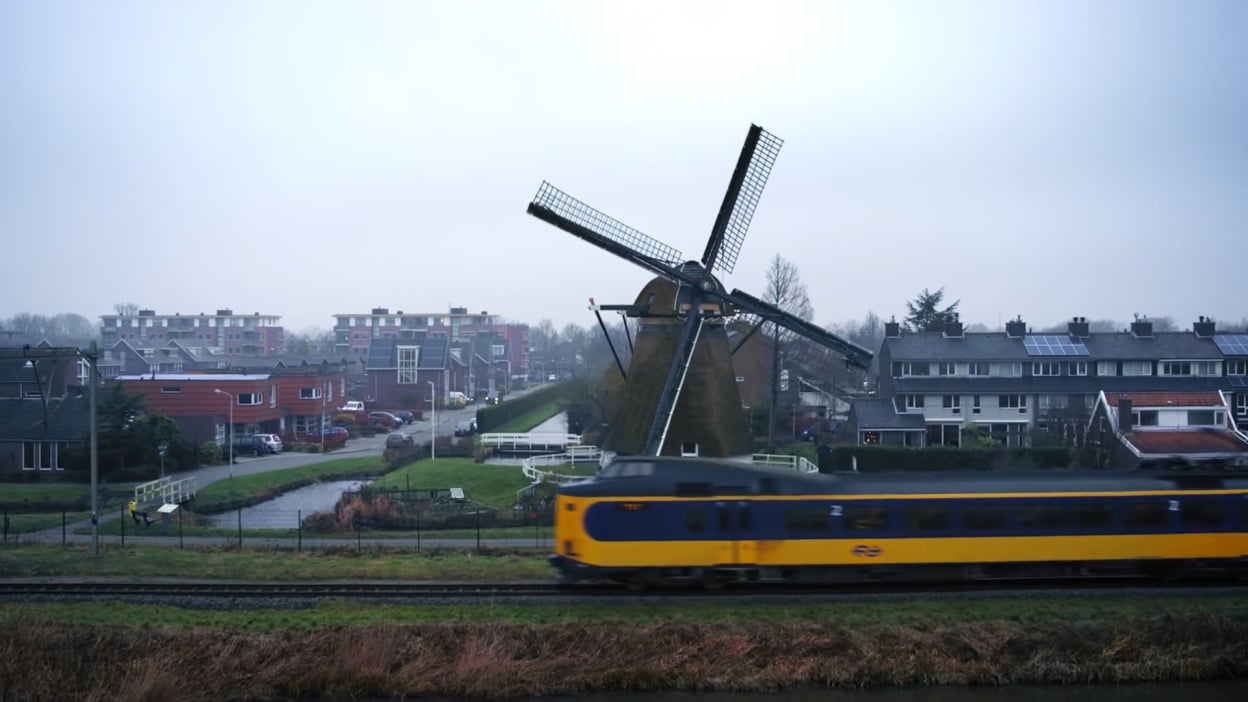Wind-Powered Trains: A Green Solution For Sustainable Transportation

Table of Contents
The Technology Behind Wind-Powered Trains
Wind-powered trains represent a paradigm shift in rail technology, utilizing the kinetic energy of wind to supplement or even replace traditional power sources. Several methods are being explored to effectively harness this renewable energy:
Harnessing Wind Energy
Two primary approaches are being considered for capturing wind energy:
- Onboard Wind Turbines: Small, lightweight wind turbines could be integrated onto the trains themselves.
- Advantages: Relatively independent of geographical limitations, offering consistent power generation even in less windy areas.
- Disadvantages: Potential for reduced aerodynamic efficiency, higher maintenance requirements, and possibly lower overall energy output compared to large-scale turbines.
- Trackside Wind Farms: Large wind turbines could be strategically positioned alongside railway tracks in areas with consistently high wind speeds.
- Advantages: High energy output, established wind turbine technology readily available.
- Disadvantages: High initial investment costs, requires significant land use, and potential visual impact on the landscape.
Key technologies underpinning wind-powered trains include advanced wind turbine design focusing on efficiency and durability, sophisticated energy storage solutions such as high-capacity batteries or flywheel systems to manage fluctuations in wind power, and efficient energy conversion systems to transform wind energy into usable electrical power for train propulsion. These advancements in wind turbine technology and energy storage solutions are crucial for the viability of this technology. Further exploration of kinetic energy recovery systems, which capture braking energy, can also boost efficiency.
Integration with Existing Rail Infrastructure
Integrating wind-powered systems into existing rail networks presents both opportunities and challenges.
- Infrastructure Upgrades: This may involve upgrading existing power grids to accommodate fluctuating energy input from wind sources and installing new transmission lines to connect wind farms to the railway.
- Track Layout Considerations: The optimal placement of trackside wind farms requires careful consideration of wind patterns, terrain, and proximity to existing railway infrastructure.
- Grid Integration: Connecting the wind energy generated to the national grid requires careful planning and coordination to ensure reliable power supply for the trains and minimize disruptions to the grid.
Successful integration hinges on a thorough assessment of existing infrastructure, identification of suitable wind resource locations, and careful planning of upgrades and modifications to the rail network.
Train Design and Optimization
The design of wind-powered trains requires a focus on both aerodynamic efficiency and weight optimization to maximize the effectiveness of wind energy capture and minimize energy consumption.
- Aerodynamic Design: Streamlined train designs minimize air resistance, reducing the energy needed for propulsion.
- Lightweight Materials: The use of lightweight yet strong materials in construction reduces the overall weight of the train, thus improving energy efficiency.
Careful consideration of materials, such as advanced composites and alloys, is crucial in the development of energy-efficient trains that maximize the benefit of the wind energy captured.
Environmental and Economic Benefits of Wind-Powered Trains
Wind-powered trains offer significant advantages over traditional methods of rail transport, benefiting both the environment and the economy.
Reduced Carbon Footprint
By utilizing renewable wind energy, wind-powered trains drastically reduce greenhouse gas emissions. Compared to diesel trains, the reduction in carbon emissions could be substantial, potentially exceeding 90%, significantly contributing to carbon emissions reduction and air quality improvement. This positive impact on environmental sustainability is a key driver for the development of this technology.
Economic Viability and Cost-Effectiveness
While the initial investment in wind-powered train technology might be higher than for traditional systems, long-term operational costs are likely to be lower due to the reduced reliance on fossil fuels. This cost-effective transportation alternative can also benefit from government subsidies and incentives promoting renewable energy adoption. A detailed lifecycle cost analysis is necessary to fully evaluate the return on investment and compare it with other transportation methods.
Challenges and Future Prospects of Wind-Powered Trains
Despite the considerable potential, challenges remain in realizing the full potential of wind-powered trains.
Technological Hurdles
- Energy Storage Limitations: Developing efficient and cost-effective energy storage systems capable of handling the intermittent nature of wind energy is a key technological hurdle. Further research and development in energy storage technology are needed.
- Reliability of Wind Energy Sources: Wind energy is inherently variable, making it crucial to develop robust energy management strategies to ensure reliable train operation.
- Integration Complexities: Integrating the wind energy capture system smoothly and efficiently with the existing rail infrastructure and energy grids presents substantial technological and logistical challenges.
Policy and Regulatory Frameworks
Supportive government policies and regulatory frameworks are essential to encourage the adoption of this innovative technology. This includes financial incentives, streamlined regulatory processes, and strategic planning to integrate wind-powered trains into existing transportation networks. International organizations also play a critical role in promoting sustainable transport policy.
Public Acceptance and Awareness
Public awareness and acceptance are crucial for the successful implementation of wind-powered trains. Educational campaigns highlighting the environmental and economic benefits of this technology are essential to build public support and ensure its long-term viability. Increased public acceptance and engagement are key to overcoming potential opposition.
Embracing Wind-Powered Trains for a Greener Future
Wind-powered trains offer a compelling pathway towards sustainable transportation. Their significant reduction in greenhouse gas emissions, potential for cost-effectiveness, and reliance on renewable energy offer compelling environmental and economic benefits. While technological hurdles and the need for supportive policies remain, ongoing research and development pave the way for significant advancements. Collaborative efforts from governments, researchers, and industries are vital to bring this transformative technology to fruition. Let's embrace wind-powered trains and pave the way for a greener, more sustainable future in transportation. Learn more about this exciting technology and support its development today!

Featured Posts
-
 How To Get Fox Channels Without Cable A Comprehensive Guide
May 04, 2025
How To Get Fox Channels Without Cable A Comprehensive Guide
May 04, 2025 -
 Turki Al Sheikhs Miscalculation 40 50 Million Viewers Lost In Canelo Paul Fight
May 04, 2025
Turki Al Sheikhs Miscalculation 40 50 Million Viewers Lost In Canelo Paul Fight
May 04, 2025 -
 Hong Kong Uses Us Dollar Reserves To Maintain Currency Peg
May 04, 2025
Hong Kong Uses Us Dollar Reserves To Maintain Currency Peg
May 04, 2025 -
 Singapore Election Results Assessing The Paps Continued Dominance
May 04, 2025
Singapore Election Results Assessing The Paps Continued Dominance
May 04, 2025 -
 Westbrooks Performance In Nuggets Spurs Game Stirs Fan Debate
May 04, 2025
Westbrooks Performance In Nuggets Spurs Game Stirs Fan Debate
May 04, 2025
